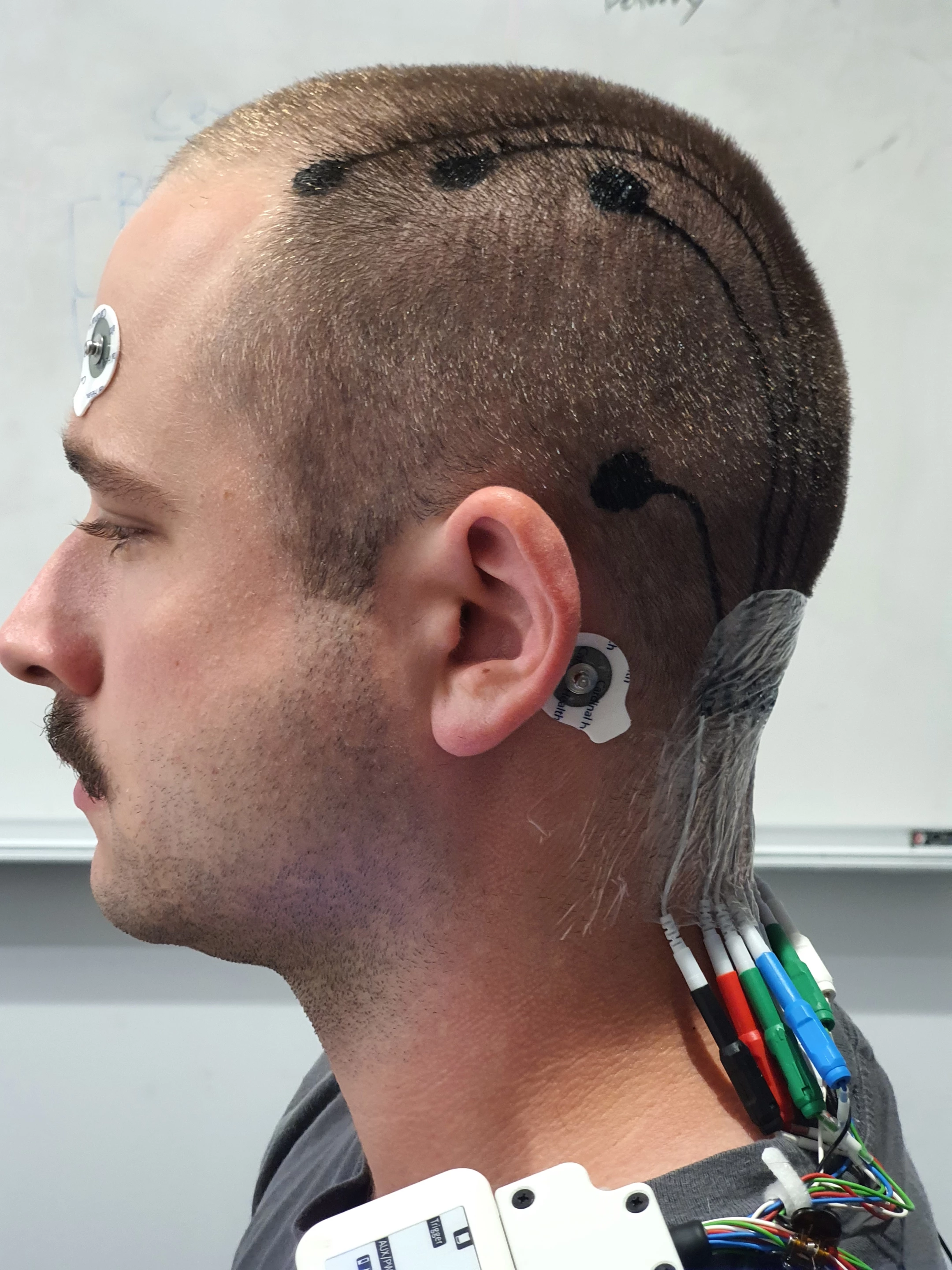While electroencephalography (EEG) can provide a wealth of information on the electrical activity of an individual's brain, that person is required to wear a clumsy skull cap full of electrodes. Such caps could soon be replaced, however, with inkjet-printed scalp tattoos.
Among other things, EEGs are frequently utilized to monitor and diagnose a wide variety of brain injuries and brain disorders such as epilepsy. They're also used to assess sleep problems, and even to allow paralyzed individuals to control computers (or other devices) via their thoughts.
Ordinarily, people who are getting an EEG must wear a skull cap equipped with a hardwired array of electrodes. Each of those electrodes has a dab of conductive gel on its underside, which lets it read the brain's electrical signals through the patient's hair and skin.
Needless to say, these caps would be quite impractical – and funny-looking – for a person to wear throughout the day as they go about their regular activities. The gel would also dry out, resulting in subpar readings.
As a result, EEGs are typically performed over relatively short periods of time in hospitals or clinics, with the patient remaining seated or reclined the whole time. This means that the recorded readings may not reflect how the person's brain activity varies over days or even weeks, as they're doing the things they usually do.
A more mobile alternative to EEG caps, which has been in the works for over a decade, involves replacing the electrodes with temporary scalp tattoos composed of conductive ink. One problem with this approach lies in the fact that such "e-tattoos" only work on completely non-hairy skin. Even if the e-tats were applied to shaved skin, they would become ineffective as the hair grew back in.
That's where the new e-tattoos come in. They're being developed by scientists from The University of Texas at Austin, and the University of California, Los Angeles (UCLA).

The tattooing process begins with a 3D scan being performed on the patient's head. Utilizing this head-shape data, a computer algorithm determines the optimum placement of the e-tattoos on that specific person. Those tattoos are then quickly applied by a 5-axis microjet printing robot.
Importantly, that robot's print nozzle doesn't actually contact the patient's skin. Instead, it shoots out the conductive ink at such a velocity that it passes through the hair and onto the underlying skin. There, it forms a flexible, stretchable, breathable film that isn't affected by the hair growing around it.
Each e-tattoo incorporates both the electrode itself and a "wire" – composed of a different type of ink – leading from it down the back of the patient's neck. There, the base of each tattooed wire is connected to an actual wire, which is in turn connected to a small wearable commercial EEG recorder.

"The holy grail for EEG is a sensor that patients can wear for long periods of time, outside the clinical setting and without the need for constant maintenance," says UT Austin's Prof. Nanshu Lu, one of the leaders of the project. "What we’ve developed opens the door for more mobile EEG sensing."
The process currently only works on scalps with fairly short hair, so the scientists are working on a robotic system that will actually comb through longer hair, pulling it aside so the printer can get at the skin beneath. They're also in the process of making the ink more resistant to friction, as it presently rubs off fairly easily.
A paper on the study was recently published in the journal Cell Biomaterials. The e-tattooing process is demonstrated in the video below.






